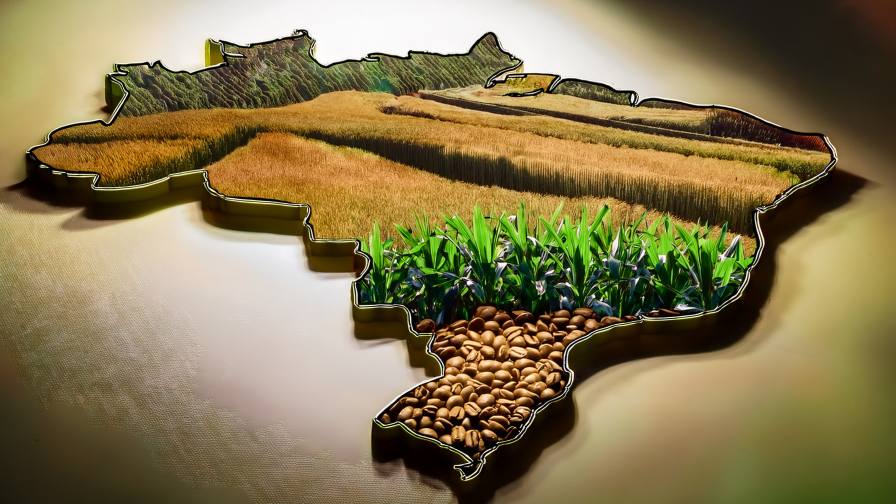Why Investing in Ag Biorationals Is a Smart Move: Key Success Factors
Editor’s note: Retiring AMVAC COO Bob Trogele will be presenting and live on a LinkedIn broadcast at the AgriBusiness Global℠ Trade Summit on August 7-8, 2024. Here he offers the necessary steps companies should take to significantly increase their chances of a successful purchase or investment in a biorationals supplier.
The global biorationals market is booming by nearly any measure, making this sector highly attractive for investment. But with literally hundreds of biorationals suppliers in the global agriculture space, how does a potential investor or acquiring company even begin to assess the field and create a short list of viable candidates?
The first question potential buyers should ask themselves is: why invest?
The second question: how does a biorational supplier execute successfully? This is critical because for a company to compete in this vigorous market is one thing, but to actually succeed can be quite another.
Why Invest in Ag Biorationals?
So why invest in this sector? Know from the beginning that there are myriad players shaping the present and future of the ag biorationals market beyond the producers and suppliers of inputs who are hands-on with the products. For instance, many governments, particularly in the West, actively encourage development and use of biorationals while also frequently complicating and even sometimes confusing regulatory requirements.
Other influencers advocating for increased use of biorationals include health-minded consumers and consumer activists, highly market-attuned food companies and food processors, and investors both public and private alike.
Within the ag industry, bankers may favor biorationals because they help to ensure the sustainability of farmers’ most valuable asset: their land. And technology providers and OEMs looking for ways to bring biorationals most efficiently to the field also have a stake in this technology.
Emotional, Technological, Financial Needs
Aware of this complex network of stakeholders, the savvy buyer or investor will further break down his or her decision-making process around biorationals into careful consideration of three separate but interdependent needs that are driving present and future adoption: emotional, technological, and financial.
Without a doubt there’s an emotional-needs aspect to biorationals, and its wellspring is a perception that because these products are natural they therefore contribute to safer food. As a result, MRLs (maximum residue limits) regulation on exports of farmers’ produce that often necessitates near-harvest application of biorationals have been set in place by wealthier nations, many of which have aging populations and often the luxury of requiring less food. At the same time, ESG programs – driven at least in part by government regulation of farmers and by food marketers anxious to respond to the desires of urban food consumers – practically demand the use of biologicals. Not surprisingly, amid this climate there’s a natural temptation by some CEOs to “greenwash” their product lines – that is, to make certain claims about environmental benefits – as a way of placating investors, activists, and others.
Second, there are very tangible technological factors that are at work around biorationals. A new generation of biorational technology can effectively deliver solutions: concentrated, fresh, and alive to ensure performance, along with formulations and packaging to help ensure efficacy and shelf life. At the same time there is ever-increasing scientific understanding that biorationals can regenerate soils and supplement the use of more traditional crop inputs by augmenting nutritionals, acting to combat chemical pest resistance, and fitting very naturally into IPM programs. Meanwhile, manufacturing for agriculture generally – including sourcing of raw materials to act as inerts – is improving.
The third factor driving the expansion of biorationals is financial. With double-digit segment growth and relative margins that are more attractive than those of other crop inputs, biorationals can be very attractive financially. Private equity sees this segment as an investment space to roll up the technology as well as invest in market access to create additional value. For traditional crop protection companies, portfolio diversification into biorationals balances lower margins and heavy regulation of older inputs. And further driving biorationals’ growth is the evolution of environment-minded carbon trading systems, nitrogen fixation technology, and methane-reduction practices into which use of biorationals fit quite nicely.
So to directly answer the question of why invest in ag biorationals: there is a host of very good reasons to do so – provided the buyer or investor understands and is prepared for the wide variety of stakeholders and the emotional, technological, and financial factors that drive biorationals’ expansion.
7 Key Success Factors of Biorational Suppliers
Once prospective buyers or investors have committed to the ag biorational sector but before they begin to narrow down their shortlist of investment targets, they should consider seven important factors that enable a biorational supplier to execute successfully.
- Manufacturing capability and capacity. The successful supplier must have not only the capability to produce product but also the capacity to ramp up production as a product succeeds in the marketplace.
- Formulation technology. Getting the product to market and to the field to be applied accurately and in a timely manner while retaining freshness and efficacy is often as important as the MOA of the product itself.
- Understanding the mode of action and biological efficacy. Targeting the MOA to the most effective pests and crops is frequently at least half the battle of bringing a biorational to market.
- Market access business model. Many suppliers falter here thinking their products will sell themselves to farmers based on efficacy alone. Without deep market access – key partners, for instance, particularly in the distribution channel – biorationals products sometimes struggle to succeed.
- Dedicated marketing. This goes hand in hand with the factor above: there must be investment in marketing beyond claims that our product just works and is better than all the others.
- Dedicated technical salesforce. This also is often overlooked by many suppliers: the need for a professional salesforce that also understands the technology behind biorationals and how and why they work in the field.
- Resources to execute – financially, but also in securing talent. A successful biorational supplier must have deep pockets to start, but also the ability to attract top-notch talent that understands agriculture and its nuanced needs and market conditions.
Execution Challenges and Watch-Outs
Having said all this, even the best and most set-up-for-success biorational companies can encounter execution challenges. Here are a few of the most common challenges and resulting watch-outs for biorationals suppliers as well as those companies that seek to invest in or outright acquire them.
- Business model. Be prepared and able to manage complexity. This is especially true if the acquiring company’s product line includes traditional crop protection chemicals as well as biorationals, both of which have unique manufacturing processes, market niches, value propositions, margins, etc. Managing both simultaneously can be a real challenge. But even biorationals-focused suppliers can encounter unexpected complications as pest complexes shift, the market’s perceptions of biologicals evolve, new competitors enter the market, and so on.
- Financial sustainability. Biorationals usually require a deep investment in R&D and something of a speculative market launch as suppliers endeavor to convince the market of the efficacy of biorationals generally along with their products specifically. This of course costs money and time. Even so, it’s of course imperative for a biorationals supplier to achieve positive cash flow, profitability, and economies of scale as their products find their footing in the ag market. Which is to say: a product introduction and launch can’t last forever; eventually the product must become established in the market.
- Experienced entrepreneurs. Taking biorationals to market, even if by a large and established company, requires an entrepreneurial mindset. Biologicals have been in the market for years yet they’re yet to be adopted widely by farmers, although they are getting there. As such, a biorationals product team must be experienced but also act like entrepreneurs: with passion, creativity, adaptability, and vision.
- Intellectual property. In a crowded market with many boisterous and often competing product claims, IP and freedom to operate are key. A successful biorationals supplier should have the ability to gain state and national registrations. Products should have patentability. And companies should look at delivery innovations that also can be IP-protected – packaging and application technologies that make their products relatively easy to ship, store, and apply.
- Cultural focus to adapt. Last, a successful biorationals supplier should have a company culture built around adaptation. For large traditional input suppliers, this is the ability to pivot to – and effectively co-manage – biorationals product lines. For start-ups this is a focus on profit: investing upfront in the launch of a product, yes, but also staying relentlessly focused on the need to achieve profitability of that product as quickly as possible.
Four Key Questions
Finally, here are four key questions investors should ask of themselves as they place their bets on the ag biorationals segment:
- What is the adoption rate of biorationals? Keep an eye on this metric as it’s all-important. As mentioned above, farmers have yet to adopt biorationals widely though they are getting there. Therefore, the speed at which biorationals reach critical mass in agriculture will have a major impact on the success of suppliers and by extension your investment.
- What is the monetization plan? Simply stated: how does the biorationals supplier and its investing or acquiring company plan to make money? The answer should be very specifically stated – by crop area and by geographical region, with ambitious but realistic targets for growth.
- What are the acquiring company’s characteristics? Will integrating the acquired supplier into the wider organization be easy or difficult? How will it be done? Does the acquiring company have the financial wherewithal to manage a one-time acquisition cost? Are there synergies between the acquiring company and the acquired supplier?
- If divesting, what is the exit plan? Not many companies like to think upfront that a biorationals supplier they’re eager to acquire might one day need to be divested, but that thought process should begin as early on a possible. Know too that, of late, company valuations have been declining even as interest rates have risen, so the hazard of getting upside down with an acquisition is all too real. Know that heading in.
The writing is on the wall: investing in biorationals is a good bet for the future. Yet as with most investments, nothing is a given. Take the time to carefully consider the varied interests that will influence the long-term success of biorationals, become aware of the various needs factors that surround their increasing use, then ask hard questions not only of biorationals suppliers but also of yourself as a prospective investor or acquirer. Taking these steps should significantly increase the chances of your successful purchase or investment in a biorationals supplier.






